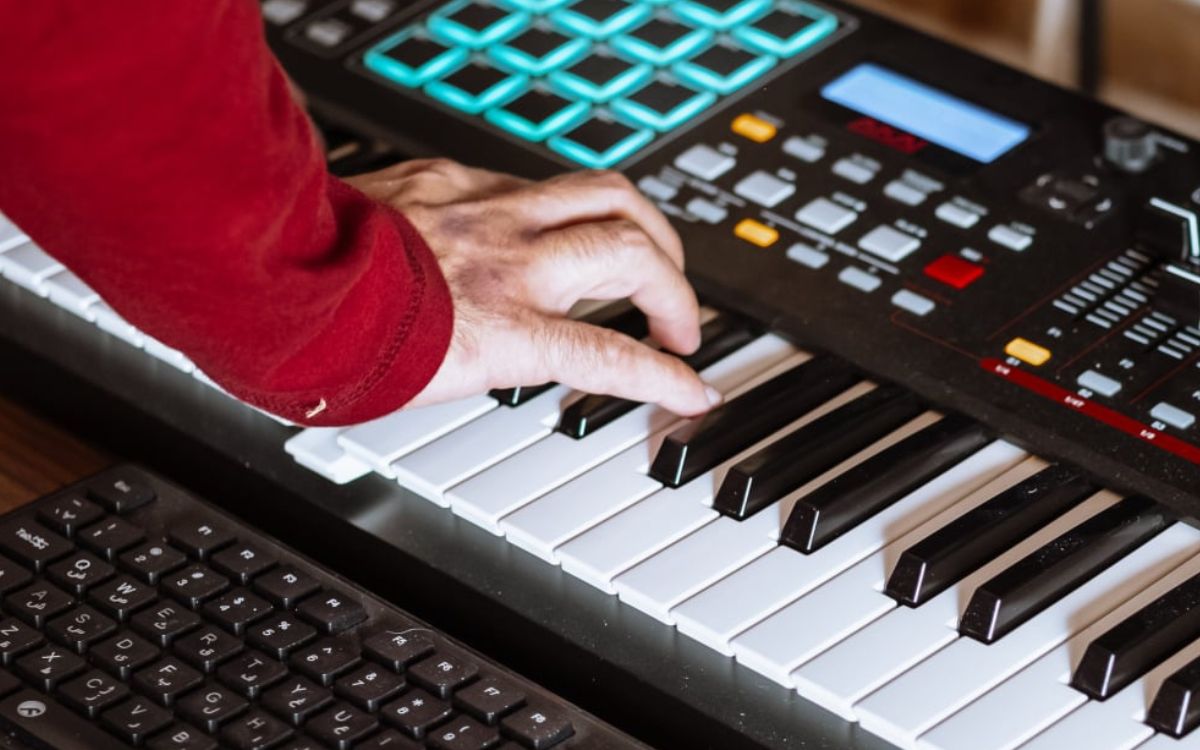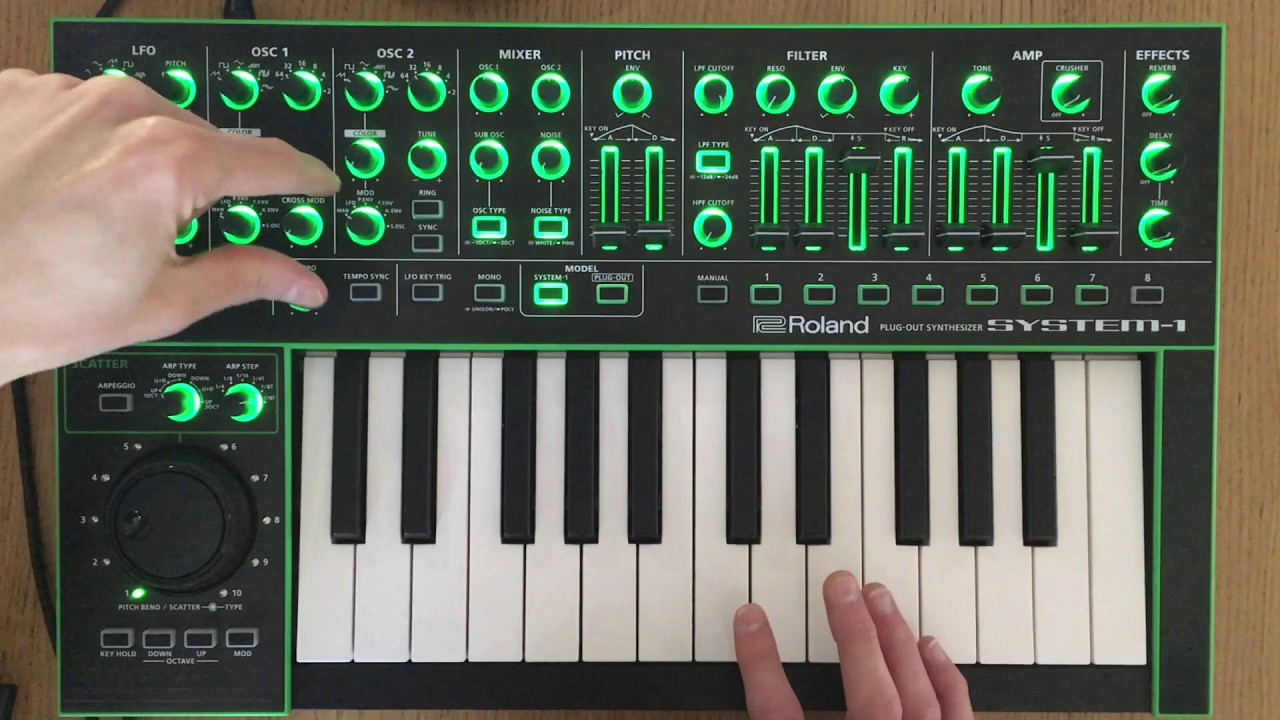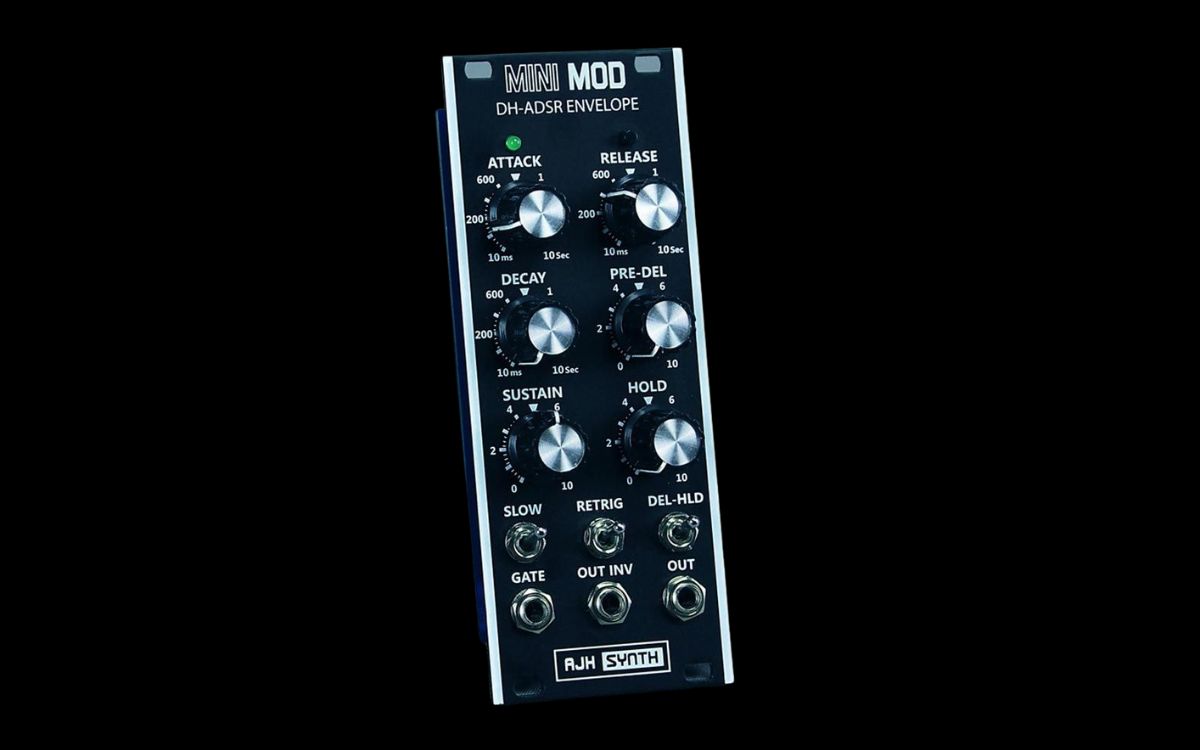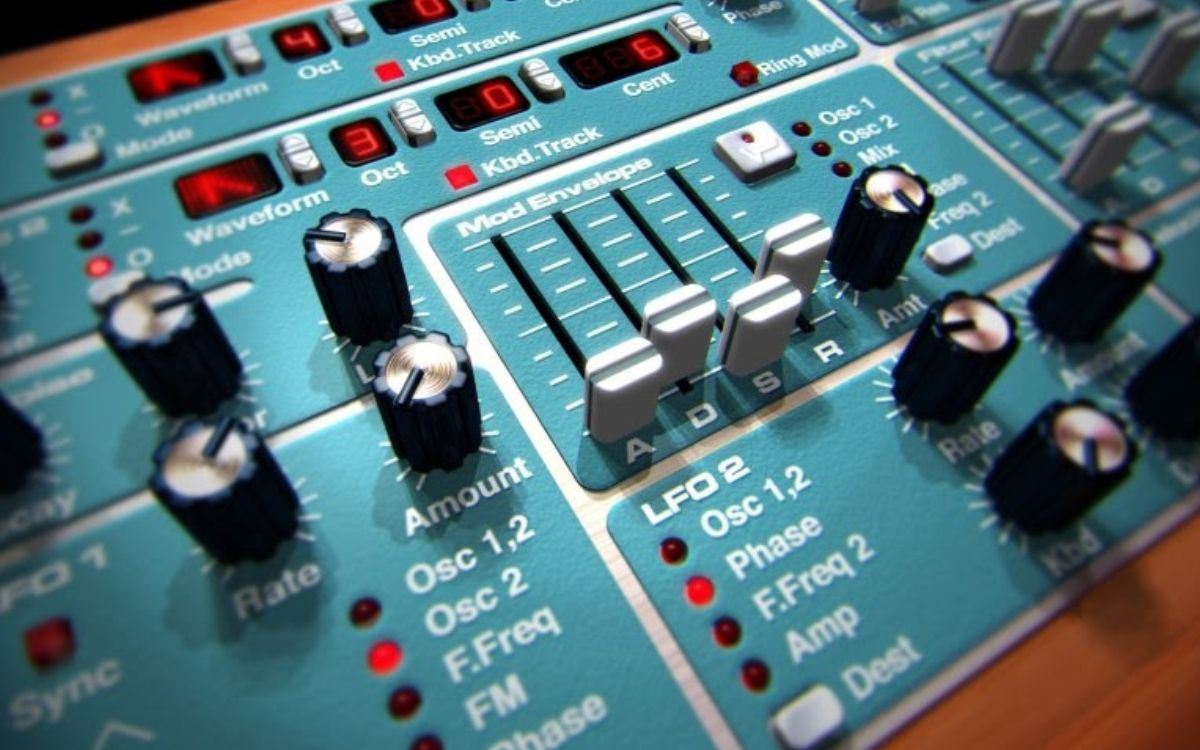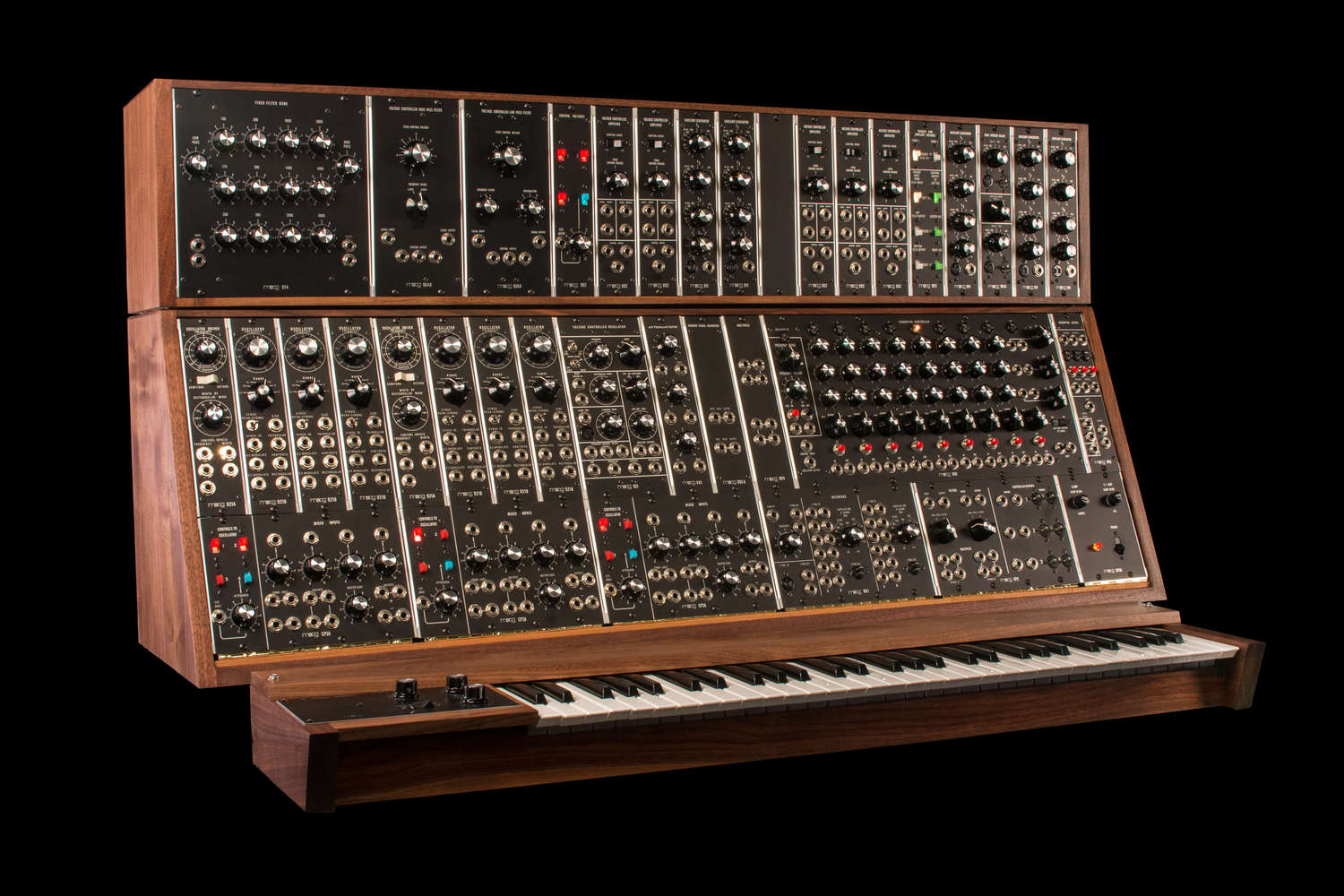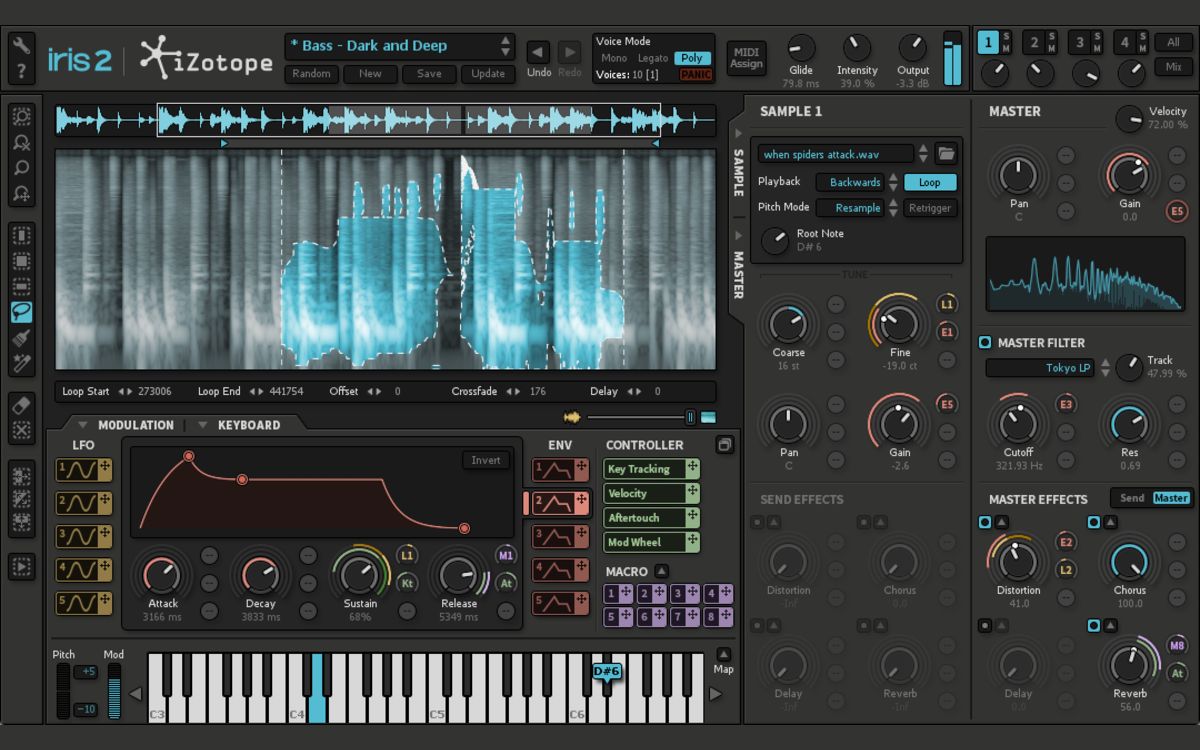Home>Instruments>Synthesizer>How To Make Dubstep With A Synthesizer
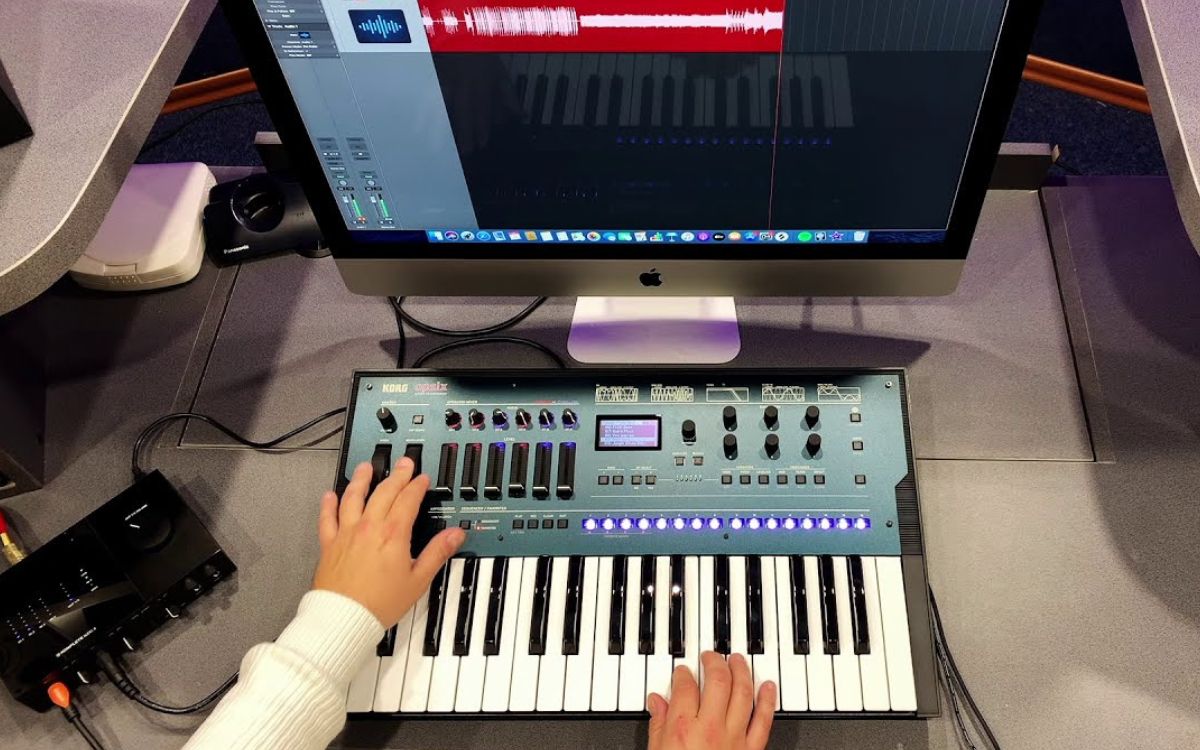

Synthesizer
How To Make Dubstep With A Synthesizer
Modified: February 20, 2024
Learn how to create amazing dubstep music using a synthesizer. Master the art of sound design and create mind-blowing bass drops and intricate melodies with our comprehensive synthesizer tutorial.
(Many of the links in this article redirect to a specific reviewed product. Your purchase of these products through affiliate links helps to generate commission for AudioLover.com, at no extra cost. Learn more)
Table of Contents
Introduction
Dubstep is a genre of electronic dance music that originated in the late 1990s in the UK. Known for its heavy basslines, intricate sound design, and energetic rhythms, dubstep has evolved into a global phenomenon, captivating listeners and inspiring musicians around the world. If you’re interested in creating your own dubstep music, having a synthesizer is essential. A synthesizer is an electronic instrument that allows you to manipulate and generate a wide range of sounds, making it the perfect tool for crafting unique and powerful dubstep tracks.
In this article, we will guide you through the process of making dubstep with a synthesizer. From understanding the genre to choosing the right synthesizer and setting it up, we’ll cover all the essential aspects of dubstep production. You’ll learn how to create bass sounds, craft wobble effects, experiment with FX and modulation, layer synth tracks, add drum patterns, and arrange your dubstep track for maximum impact. Additionally, we’ll provide some useful tips for mixing and mastering your dubstep creations.
Whether you’re a beginner with little experience in music production or an experienced producer looking to delve into the world of dubstep, this article will equip you with the knowledge and techniques you need to create your own original dubstep tracks. So, let’s dive in and unleash the power of the synthesizer in the realm of dubstep music!
Understanding Dubstep
To effectively create dubstep music, it’s crucial to have a solid understanding of the genre. Dubstep is characterized by its heavy, sub-bass frequencies, syncopated rhythm patterns, and explosive drops. Originally, dubstep music had a tempo of around 140 beats per minute (BPM), but it has since evolved to encompass a wider range of tempos.
Dubstep tracks often feature atmospheric intros, build-ups that create tension, and climactic drops that deliver the high-energy impact listeners crave. The drops are typically accompanied by powerful basslines and intricate sound design, giving the genre its distinctive and intense sound.
One of the key elements of dubstep is the “wobble” effect, which is achieved by modulating the pitch and filter cutoff of a bass sound. This creates a dynamic and evolving bassline that adds movement and depth to the track.
In terms of song structure, dubstep compositions generally consist of several sections, including the intro, drop, breakdown, and build-up. This structure allows for variation and keeps the listener engaged throughout the track.
Furthermore, dubstep draws influences from various musical styles, including UK garage, drum and bass, and reggae. These influences contribute to the unique blend of dark, atmospheric, and aggressive soundscapes that define the genre.
Listening to established dubstep artists such as Skream, Benga, and Rusko can greatly assist in developing an understanding of the genre’s characteristics and the sound you aim to create.
By understanding the core elements of dubstep and familiarizing yourself with its sonic palette, you’ll be better equipped to harness the power of your synthesizer and create compelling dubstep tracks.
Choosing the Right Synthesizer
When it comes to making dubstep music, selecting the right synthesizer is crucial. A synthesizer is the primary tool for shaping and creating the sounds that define the genre. Consider these factors when choosing a synthesizer for dubstep production:
- Sound Design Capabilities: Look for a synthesizer that offers a wide range of sound design options. This includes oscillators, filters, modulation sources, and effects. Dubstep relies heavily on unique and complex sound design, so having a synthesizer with a versatile architecture is essential.
- Bass Frequencies: Since dubstep is known for its heavy basslines, make sure the synthesizer can generate deep and powerful bass frequencies. Look for synthesizers that have a low frequency range and the ability to shape the bass sound in terms of amplitude, filtering, and modulation.
- Modulation Capabilities: Modulation is a key aspect of dubstep sound design. Look for a synthesizer that offers a wide range of modulation options, including LFOs, envelopes, and modulation matrixes. This allows you to create evolving and dynamic sounds that are characteristic of dubstep.
- Effects: Having built-in effects within the synthesizer can be useful for dubstep production. Look for synthesizers that offer effects such as distortion, delay, reverb, and modulation effects. These effects can add depth and character to your sounds.
- Compatibility and Integration: Consider the compatibility of the synthesizer with your music production setup. Ensure that it can be easily integrated into your digital audio workstation (DAW) and that it supports common protocols such as MIDI. This will allow for seamless control and integration with your overall production workflow.
Some popular synthesizers that are frequently used in dubstep production include Native Instruments Massive, Serum, FM8, and Xfer Records Serum. These synthesizers offer excellent sound shaping capabilities and a wide range of modulation options that are ideal for creating dubstep sounds.
Remember, the choice of synthesizer ultimately depends on your personal preference, workflow, and budget. Experiment with different synthesizers to find the one that best suits your needs and allows you to unleash your creativity in the realm of dubstep music production.
Setting up Your Synthesizer
Once you have chosen the right synthesizer for your dubstep production, it’s time to set it up properly. Follow these steps to ensure your synthesizer is ready to unleash its sonic potential:
- Connectivity: Start by connecting your synthesizer to your computer or audio interface using the appropriate cables. Most synthesizers nowadays use USB connections, but make sure to check the specific requirements of your synthesizer.
- Install Software: If your synthesizer requires accompanying software, install it on your computer following the provided instructions. This software allows you to control and manage your synthesizer’s parameters from your computer.
- MIDI Setup: Configure the MIDI settings of your synthesizer. Ensure that the MIDI input and output are correctly assigned and that your synthesizer is recognized by your digital audio workstation (DAW) or MIDI controller.
- Audio Routing: Set up the audio routing for your synthesizer. This involves selecting the appropriate audio inputs and outputs in your DAW or audio interface settings. Make sure you have a clear understanding of how to route audio from your synthesizer to your DAW for recording and playback.
- Monitoring: Set up your monitoring system to hear the sounds generated by your synthesizer. This can involve connecting headphones or speakers to your audio interface or setting up studio monitors. Ensure that you have a clear and accurate monitoring setup to properly hear and evaluate your dubstep sounds.
- Read the Manual: Familiarize yourself with the user manual of your synthesizer. This will help you understand the various controls, parameters, and features of your synthesizer. Take the time to learn about the specific functionalities and capabilities of your synthesizer to make the most out of it.
By properly setting up your synthesizer, you ensure seamless integration with your production setup and a smooth workflow for creating dubstep music. Take the time to understand the connectivity, software requirements, and audio routing of your synthesizer to avoid any technical difficulties during the production process. Once your synthesizer is properly set up, you’re ready to dive into the exciting world of sound design and dubstep music creation.
Creating Bass Sounds
Bass is an essential element in dubstep music, and creating powerful and distinctive bass sounds is key to crafting a compelling track. Here are some techniques to help you create impactful bass sounds using your synthesizer:
- Oscillator Selection: Start by selecting the appropriate oscillator waveform for your bass sound. Common choices include sine, triangle, and square waves. Each waveform has its own unique tonal characteristics, so experiment with different options to find the one that suits your desired sound.
- Filtering: Utilize the synthesizer’s filter section to shape the frequency content of your bass sound. Low-pass filters are particularly effective in dubstep, as they allow the low frequencies to pass through while attenuating higher frequencies. Experiment with filter cutoff and resonance settings to achieve the desired tonal qualities and character in your bass sound.
- Modulation: Modulate your bass sound to add movement and interest. Utilize the modulation capabilities of your synthesizer, such as LFOs or envelopes, to modulate parameters like pitch, filter cutoff, or oscillator waveshape. This can help create evolving and dynamic bass sounds that contribute to the energetic nature of dubstep music.
- Layering: Layering multiple bass sounds can add depth and richness to your track. Experiment with blending different bass patches or duplicating and detuning a single bass sound to create a thicker and more powerful presence. This technique can help your dubstep bassline cut through the mix and make a strong impact.
- Effects: Enhance your bass sound with the use of effects. Distortion, saturation, and compression can add grit and intensity, while chorus, phaser, and delay effects can contribute to the overall spatial and atmospheric qualities of your bass sound. Experiment with different effects to add depth and character to your bassline.
Remember, the key to creating great bass sounds in dubstep is experimentation. Don’t be afraid to push the boundaries and try unconventional techniques. By exploring different settings, modulations, and effects, you can develop unique and powerful bass sounds that help define your signature sound in the world of dubstep music.
Crafting Wobble Effects
Wobble effects are a hallmark of dubstep music, adding a distinctive rhythmic and dynamic element to the basslines. The wobble effect is achieved through modulation, primarily by modulating the pitch and filter cutoff of a bass sound. Here are some techniques to help you craft captivating wobble effects using your synthesizer:
- Assign LFOs: Start by assigning one or multiple Low-Frequency Oscillators (LFOs) to modulate the pitch and filter cutoff of your bass sound. LFOs generate repeating waveforms at a frequency lower than the audible range, making them perfect for creating rhythmic modulation patterns.
- Experiment with LFO Shapes: Explore different LFO waveshapes, such as sawtooth, square, or random, to achieve various wobble patterns. Each waveform brings a different rhythmic character to the modulation, so don’t hesitate to experiment and find the one that fits your desired effect.
- Adjust LFO Rate: Control the rate of the LFO modulation to determine the speed at which the wobble effect occurs. Faster rates create rapid and intense wobbles, while slower rates produce more languid and relaxed wobbles. Experiment with different LFO rates to find the rhythmic feel that adds the desired energy and movement to your bassline.
- Blend Multiple LFOs: Layering multiple LFOs with different rates, waveshapes, and assigned parameters can create complex and evolving wobble effects. This technique adds depth and richness to your bass sound and allows for intricate and engaging modulation patterns.
- Apply Modulation to Additional Parameters: Explore modulating other parameters of your synthesizer to expand the range of wobble effects. This could include modulating the amplitude, panning, or even the waveform shape itself. Experimentation with different modulation targets can yield unique and unconventional wobble sounds.
- Automate Wobble Intensity: Create variation and excitement in your wobble effects by automating the intensity over time. Use automation within your DAW to control parameters such as LFO depth, filter cutoff, or even the mix of a wobble effect. This allows you to introduce dynamic changes and build tension in your bassline.
Remember, the key to crafting captivating wobble effects is experimentation and creativity. Play around with different modulation settings, LFO rates, and shapes to create unique and engaging wobble patterns that enhance the rhythmic and dynamic elements of your dubstep music. By continuously exploring new ideas and pushing the boundaries of modulation, you can develop your own signature wobble effects that will make your dubstep tracks stand out from the crowd.
Experimenting with FX and Modulation
In the world of dubstep music, the creative use of effects (FX) and modulation is key to crafting unique and immersive sounds. By harnessing the power of your synthesizer’s FX section and exploring various modulation techniques, you can add depth and character to your tracks. Here are some ideas to help you experiment with FX and modulation in your dubstep production:
- Delay and Reverb: Experiment with different delay and reverb settings to create a sense of space and depth in your sounds. Add a touch of delay to your basslines to give them a sense of movement and create echoes. Use reverb to add a sense of ambiance and create a larger sonic landscape.
- Distortion and Saturation: Apply distortion and saturation effects to your bass sounds for added grit, intensity, and harmonics. Experiment with different types and amounts of distortion to achieve the desired level of aggression and power in your sounds. This can help your basslines cut through the mix and stand out.
- Modulation FX: Explore modulation effects such as chorus, flanger, and phaser to add movement and interest to your sounds. These effects can create a swirling, sweeping, or pulsating effect and bring a sense of motion and excitement to your dubstep production.
- Filter Modulation: Utilize filter modulation to add movement and dynamics to your sounds. Experiment with assigning LFOs or envelope generators to modulate the filter cutoff frequency. This can create evolving and evolving filter sweeps, giving your sounds a unique and vibrant character.
- Pitch Modulation: Use pitch modulation to create interesting melodic phrases and variations. Experiment with assigning LFOs or envelopes to modulate the pitch of your sounds, both subtly and dramatically. This technique can add movement and unpredictability to your melodies and basslines.
- Automation: Don’t be afraid to use automation within your digital audio workstation (DAW) to control various parameters of your synthesizer. Automate parameters like cutoff frequency, resonance, or effect mix to introduce dynamic changes and add excitement to your tracks. Automation allows for precise and detailed control over your sounds.
Remember, the key to experimenting with FX and modulation is to let your creativity run wild. Don’t be afraid to try unconventional settings or combine multiple effects and modulation techniques to achieve unique and intriguing sounds. Allow yourself to be inspired by the genre and let your instincts guide you as you explore the expansive sonic possibilities available to you through FX and modulation.
Layering Synth Tracks
Layering synth tracks is a powerful technique that can add depth, richness, and complexity to your dubstep productions. By combining different synth sounds and textures, you can create a larger and more impactful sonic landscape. Here are some tips for effectively layering synth tracks in your dubstep music:
- Choose Complementary Sounds: Select synth sounds that complement each other and fill different frequency ranges. For example, you could combine a sub-bass patch with a mid-range lead or a high-frequency atmospheric pad. This ensures that each layer has its own space in the mix and contributes something unique to the overall sound.
- Balance the Volume Levels: Pay attention to the volume levels of each layer to create a balanced and cohesive sound. Adjust the volume of each layer so that they work together harmoniously without one overpowering the others. This helps maintain clarity and control in the mix.
- Consider Stereo Imaging: Utilize stereo imaging techniques to enhance the sense of space and width in your synth layers. Pan different layers to different positions in the stereo field to create a sense of separation and depth. This can be particularly effective for pads or atmospheric sounds.
- Layer with Different Sound Design Techniques: Experiment with different sound design techniques for each layer. You can use techniques such as modulation, filtering, or effects to give each layer a unique character. This adds complexity and interest to the overall sound, making it more engaging for the listener.
- Use EQ to Shape Each Layer: Apply equalization (EQ) to shape the frequency content of each layer. This helps prevent frequency clashes and allows each layer to occupy its own space in the frequency spectrum. Use EQ to boost or cut specific frequencies to ensure clarity and separation among the layers.
- Blend the Layers with Automation: Combine automation techniques to create dynamic changes and movement within your layered synth tracks. Experiment with automation to gradually introduce or remove certain layers at specific sections of your track. This adds interest and variation, capturing the listener’s attention throughout the song.
Layering synth tracks opens up a world of possibilities in creating rich, textured, and dynamic sounds in your dubstep music. Through careful selection, balancing, sound design, and automation, you can create a complex and captivating sonic experience that enhances the energy and impact of your tracks. Let your creativity guide you as you explore different layering techniques and combinations to create your own unique sound in the realm of dubstep music.
Adding Drum Patterns
Drum patterns play a vital role in driving the energy and rhythm of your dubstep tracks. Adding the right drum patterns can enhance the overall groove and impact of your music. Here are some tips to help you create compelling drum patterns for your dubstep productions:
- Kick and Snare: Start with a strong kick drum and a punchy snare. These elements provide the foundational rhythm and drive of your drum pattern. Make sure the kick and snare work together to create a solid and impactful groove.
- Hi-Hats and Cymbals: Incorporate hi-hats and cymbals to add rhythmic variations and textures. Experiment with different hi-hat and cymbal patterns to create intricate and dynamic rhythms. Use open hi-hats and crashes to add intensity and build-ups at key moments in your track.
- Percussion: To add complexity and depth to your drum patterns, incorporate various percussion elements. This can include shakers, claps, tambourines, or any other percussion sounds that fit the vibe of your dubstep track. Layer different percussion elements to create interesting and unique rhythmic patterns.
- Syncopation: Introduce syncopated rhythms to create tension and interest in your drum patterns. Play with offbeat snare hits or unexpected kick drum placements to add a sense of groove and unpredictability. This can help make your drum patterns more dynamic and engaging.
- Variation and Breaks: Keep your drum patterns interesting by introducing variations and breaks. Add fills, rolls, and breaks at strategic moments to create excitement and add a sense of impact. This can help maintain the listener’s interest throughout the track.
- Layering and Processing: Consider layering and processing your drum sounds to add depth and character. Layering multiple drum samples can create a more unique and textured sound. Additionally, processing techniques such as compression, EQ, and reverb can be applied to fine-tune the sound and fit it perfectly into the mix.
Experimentation is key when creating drum patterns for your dubstep tracks. Listen to other dubstep tracks for inspiration, but don’t be afraid to put your own spin on it. Let your creativity guide you as you construct drum patterns that groove, drive, and captivate the listener. Remember, the drums provide the backbone for your dubstep music, so pay attention to detail and strive for a well-crafted and impactful rhythm section.
Arranging Your Dubstep Track
Arranging your dubstep track is where you bring all the elements together to create a cohesive and engaging musical journey. Effective arrangement is crucial for keeping the listener hooked and maintaining a sense of progression throughout the song. Here are some tips to help you arrange your dubstep track:
- Intro: Start your track with an attention-grabbing intro. This can be a stripped-down section that builds anticipation and sets the mood for the rest of the song. Use atmospheric sounds, subtle percussion, or vocal samples to create intrigue and draw the listener in.
- Build-ups and Drops: Use build-up sections to create tension and anticipation before the drops. Gradually increase the energy, intensity, and complexity of the sound elements to build towards a powerful drop. The drop is the climactic moment of your track, where all the elements come together for maximum impact.
- Breakdowns: Provide moments of respite and contrast with breakdown sections. These sections usually have fewer elements and a more subdued energy, allowing the track to breathe and create a sense of dynamics. A breakdown can feature atmospheric pads, a melodic interlude, or a breakdown in beats. Use this section to build anticipation for the next drop.
- Variation: Add variation to your track to keep it interesting. Include different sections or variations of melodies, basslines, or drum patterns to provide sonic diversity. This can involve changing up the arrangement, introducing new sounds, or altering the intensity of the elements. Keep in mind that subtle changes in the arrangement can make a big impact.
- Transitions: Pay attention to smooth transitions between sections of your track. Use techniques like filter sweeps, risers, fills, or FX to create seamless transitions that maintain the flow and energy of the song. Well-crafted transitions help maintain momentum and avoid any abrupt changes that could disrupt the listening experience.
- Structural Considerations: Structure your track in a way that makes sense to the listener. This typically includes having a clear intro, verses, choruses, and breakdowns. For example, a common arrangement structure in dubstep follows an intro-verse-drop-verse-drop-breakdown-drop pattern. However, feel free to experiment and deviate from traditional structures to create your own unique arrangement style.
Remember, arranging your dubstep track is both an art and a science. Take the time to listen critically to your arrangement, ensuring that it flows smoothly and keeps the listener engaged from start to finish. Experiment with different arrangement ideas, transitions, and structural variations to find the arrangement that best showcases your creative vision and keeps your dubstep track exciting and captivating.
Mixing and Mastering Tips
Properly mixing and mastering your dubstep track is essential to make it sound polished, professional, and ready for release. Here are some tips to help you achieve a well-balanced mix and a pristine master:
- Gain Staging: Start by setting proper gain levels for each element in your mix. Ensure that no individual track is too loud or too quiet, and maintain headroom to prevent clipping and distortion. Use gain automation and volume faders to create balance and clarity in your mix.
- Panning: Utilize panning effectively to create a sense of space and separation in your mix. Spread elements across the stereo field to avoid congestion in the center and achieve a wider sound. Be mindful of mono compatibility, ensuring that essential elements remain centered.
- Equalization: Use EQ to sculpt the frequency content of each element in your mix. Cut unnecessary frequencies to reduce muddiness and make room for important sounds. Boost or attenuate frequencies to shape the tone and achieve balance. Always aim for clarity and cohesiveness without excessive boosting or drastic cuts.
- Compression and Dynamics: Apply compression to control the dynamics of individual tracks or groups of tracks. Use compression to tame transients, even out levels, and add punch or sustain to elements. Experiment with different compressor settings to achieve the desired impact and balance in your mix.
- Spatial Effects: Add spatial effects such as reverb and delay to create depth and ambience in your mix. Use send/return tracks to apply these effects subtly to different elements, enhancing the sense of space without overwhelming the mix. Adjust the parameters to fit the specific requirements of each track.
- Reference Tracks: A/B your mix against professionally mixed and well-balanced dubstep tracks. Compare the frequency balance, stereo spread, and overall tonal qualities. This helps you identify any areas that need adjustment and ensures that your mix stands up to industry standards.
- Mastering: When it comes to mastering, consider seeking professional assistance if you’re not confident in your mastering skills. However, if you’re mastering your track yourself, focus on achieving clarity, loudness, and tonal balance. Use EQ, compression, limiting, and stereo imaging techniques to enhance the overall sound and make it ready for distribution.
- Monitoring: Use accurate and reliable studio monitors or high-quality headphones to ensure accurate monitoring of your mix. Familiarize yourself with their characteristics and aim for a mix that translates well across different playback systems. Regularly take breaks to rest your ears and maintain objectivity during the mixing process.
Remember, mixing and mastering are iterative processes that often involve experimentation and fine-tuning. Trust your ears, take breaks when needed, and continue refining your mix until you achieve the desired sound and balance. Whether you decide to do it yourself or seek professional assistance, a well-mixed and masterful dubstep track can greatly enhance the impact and enjoyment for your listeners.
Conclusion
Creating dubstep music with a synthesizer is a thrilling and creative journey. Throughout this article, we’ve explored the essential elements and techniques involved in crafting captivating dubstep tracks.
From understanding the genre and choosing the right synthesizer to setting it up and creating powerful bass sounds, we’ve covered the foundational aspects of dubstep production. We’ve also delved into crafting wobble effects, experimenting with FX and modulation, layering synth tracks, adding drum patterns, and arranging your track for maximum impact.
Additionally, we touched on the crucial aspects of mixing and mastering, ensuring your dubstep music sounds professional and polished. These final touches are what bring your production to its full potential and allow it to shine among other tracks in the genre.
Remember, mastery of dubstep production takes time, practice, and experimentation. Don’t be afraid to break the rules, think outside the box, and let your creativity flow. Embrace the limitless possibilities that your synthesizer offers, and develop your own unique style within the dubstep genre.
Lastly, always trust your ears and enjoy the journey. Making dubstep with a synthesizer is not only about creating powerful basslines and energetic rhythms, but also about expressing yourself and connecting with your audience. So, dive in, explore, and let your dubstep creations resonate with passion and authenticity.
Now, armed with the knowledge and techniques shared in this article, it’s time to unleash your creativity and make your mark in the world of dubstep music. Embrace the power of your synthesizer and create dubstep tracks that captivate listeners and ignite dancefloors.


